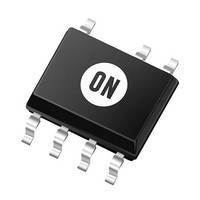NCP1207BDR2G ON Semiconductor, NCP1207BDR2G Datasheet - Page 12

NCP1207BDR2G
Manufacturer Part Number
NCP1207BDR2G
Description
IC CTRLR PWM CM OVP OCP HV 8SOIC
Manufacturer
ON Semiconductor
Datasheet
1.NCP1207APG.pdf
(17 pages)
Specifications of NCP1207BDR2G
Output Isolation
Isolated
Voltage - Input
10.6 ~ 20 V
Operating Temperature
-40°C ~ 150°C
Package / Case
8-SOIC (0.154", 3.90mm Width) 7 leads
Number Of Outputs
1
Duty Cycle (max)
28.6 %
Output Current
500 mA
Mounting Style
SMD/SMT
Switching Frequency
75 KHz
Operating Supply Voltage
20 V
Maximum Operating Temperature
+ 150 C
Fall Time
20 ns
Minimum Operating Temperature
- 40 C
Rise Time
40 ns
Synchronous Pin
No
Topology
Flyback
Lead Free Status / RoHS Status
Lead free / RoHS Compliant
Available stocks
Company
Part Number
Manufacturer
Quantity
Price
Company:
Part Number:
NCP1207BDR2G
Manufacturer:
ON Semiconductor
Quantity:
1 950
Part Number:
NCP1207BDR2G
Manufacturer:
ON/安森美
Quantity:
20 000
will drop at higher operating junction temperatures).
A DIP8 package offers a junction- -to- -ambient thermal
resistance R
dissipation can thus be computed knowing the maximum
operating ambient temperature (e.g. 70C) together with
the maximum allowable junction temperature (125C):
do not reach the worse consumption budget imposed by the
operating conditions. Several solutions exist to cure this
trouble:
Again, adding some copper area around the PCB footprint
will help decrease this number: 12 mm × 12 mm to drop
R
or 6.5 mm ×6.5 mm with 70 mm copper thickness (2 oz).
P max =
θJA
The SOIC package offers a 178C/W thermal resistor.
The first one consists in adding some copper area around
the NCP1207A DIP8 footprint. By adding a min pad area
of 80 mm
75C/W. Maximum power then grows up to 730 mW.
A resistor R
negative spikes at turn- -off (see below)
b) split the power budget between this resistor and the
package. The resistor is calculated by leaving at least 50 V
on pin 8 at minimum input voltage (suppose 100 Vdc in
our case):
power dissipated by the resistor is thus:
P drop = V dropRMS
Please refer to the application note AND8069 available
from www.onsemi.com/pub/ncp1200.
If the power consumption budget is really too high for the
DSS alone, connect a diode between the auxiliary
winding and the V
operation (V
down to 100C/W with 35 mm copper thickness (1 oz)
=
=
T jmax − T Amax
2
7.0 mA ⋅ 7.1 kΩ ⋅ 0.286
I DSS ⋅ R drop ⋅ DSS duty − cycle
θJA
of 35 mm copper (1 oz.), R
drop
CC
R θJA
R drop ≤
needs to be inserted with pin 8 to a) avoid
> 10 V).
of 100C/W. The maximum power
CC
7.1 kΩ
2
∕R drop
V bulkmin − 50 V
pin which will disable the DSS
< 550 mW
R drop
7.0 mA
. As we can see, we
2
θJA
= 99.5 mW
< 7.1 kΩ
drops to about
2
http://onsemi.com
. The
12
As one can see, we do not recommend using the SO- -8
package and the DSS if the part operates at high switching
frequencies. In that case, an auxiliary winding is the best
solution.
Overload Operation
controlled (e.g. wall adapters delivering raw DC level), it is
interesting to implement a true short- -circuit protection. A
short- -circuit actually forces the output voltage to be at a low
level, preventing a bias current to circulate in the
Optocoupler LED. As a result, the FB pin level is pulled up
to 4.2 V, as internally imposed by the IC. The peak current
setpoint goes to the maximum and the supply delivers a
rather high power with all the associated effects. Please note
that this can also happen in case of feedback loss, e.g. a
broken Optocoupler. To account for this situation,
NCP1207A hosts a dedicated overload detection circuitry.
Once activated, this circuitry imposes to deliver pulses in a
burst manner with a low duty- -cycle. The system recovers
when the fault condition disappears.
maximum until the output voltage reaches its target and the
feedback loop takes over. This period of time depends on
normal output load conditions and the maximum peak
current allowed by the system. The time- -out used by this IC
works with the V
V
device internally watches for an overload current situation.
If this condition is still present when the VCC
reached, the controller stops the driving pulses, prevents the
self- -supply current source to restart and puts all the circuitry
in standby, consuming as little as 330 mA typical (I
parameter). As a result, the V
toward 0. When this level crosses 5.3 V typical, the
controller enters a new startup phase by turning the current
source on: V
pulses at the VCC
has been removed before VCC
continues its normal operation. Otherwise, a new fault cycle
takes place. Figure 24 shows the evolution of the signals in
presence of a fault.
CC
In applications where the output current is purposely not
During the startup phase, the peak current is pushed to the
decreases from the VCC
CC
rises toward 12 V and again delivers output
CC
OFF
decoupling capacitor: as soon as the
crossing point. If the fault condition
OFF
CC
ON
level (typically 12 V) the
level slowly discharges
approaches, then the IC
ON
level is
CC3








